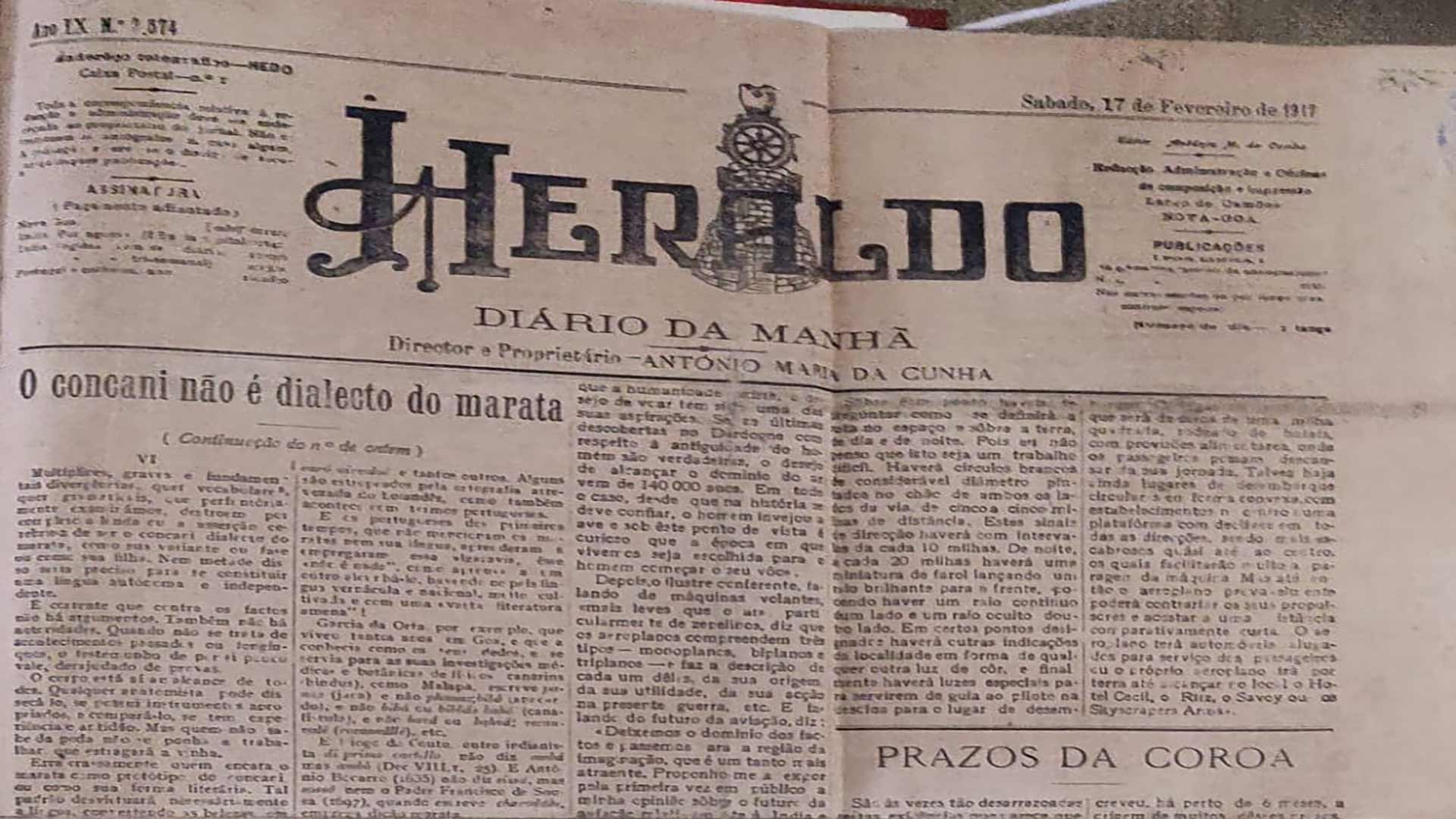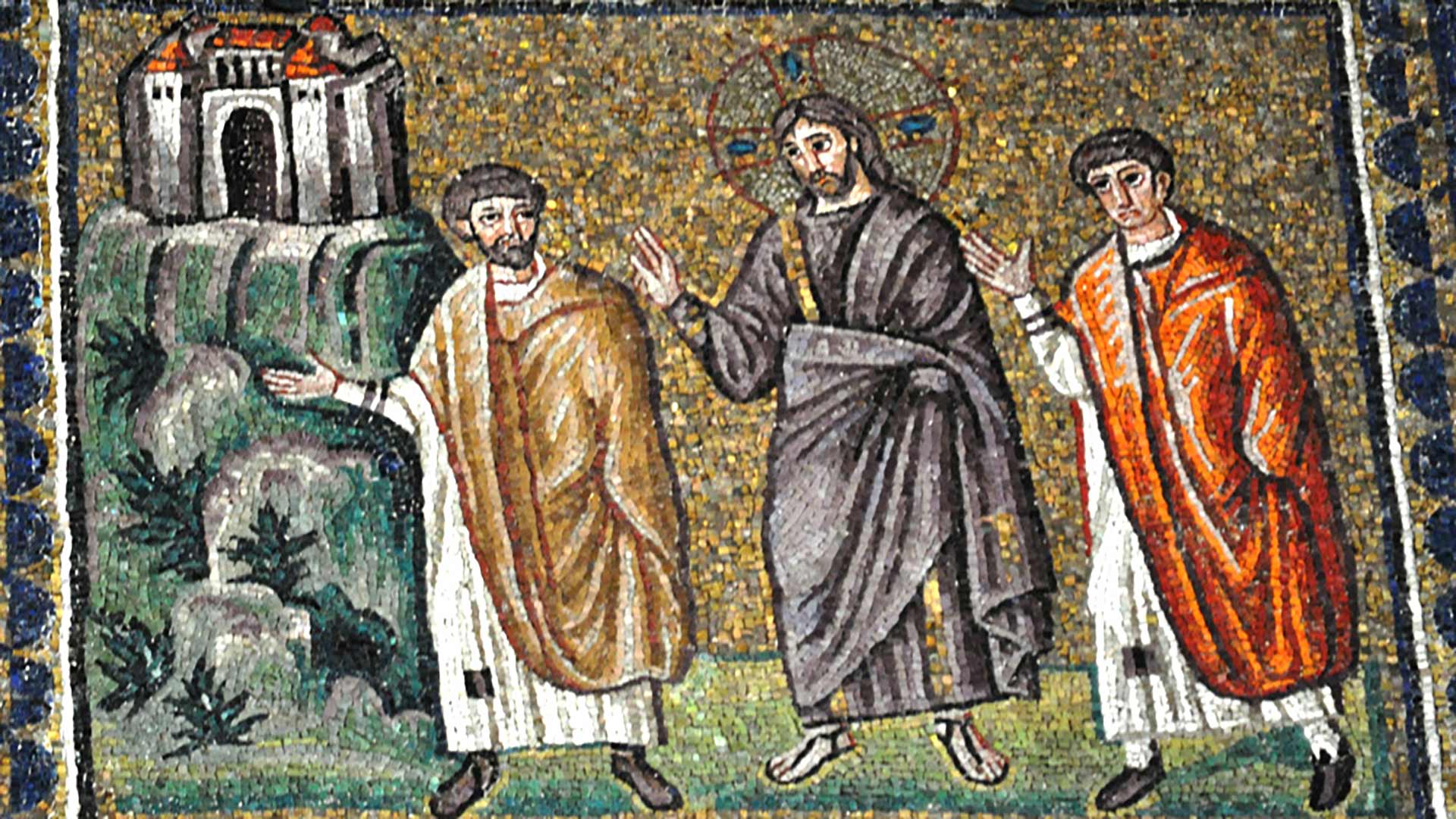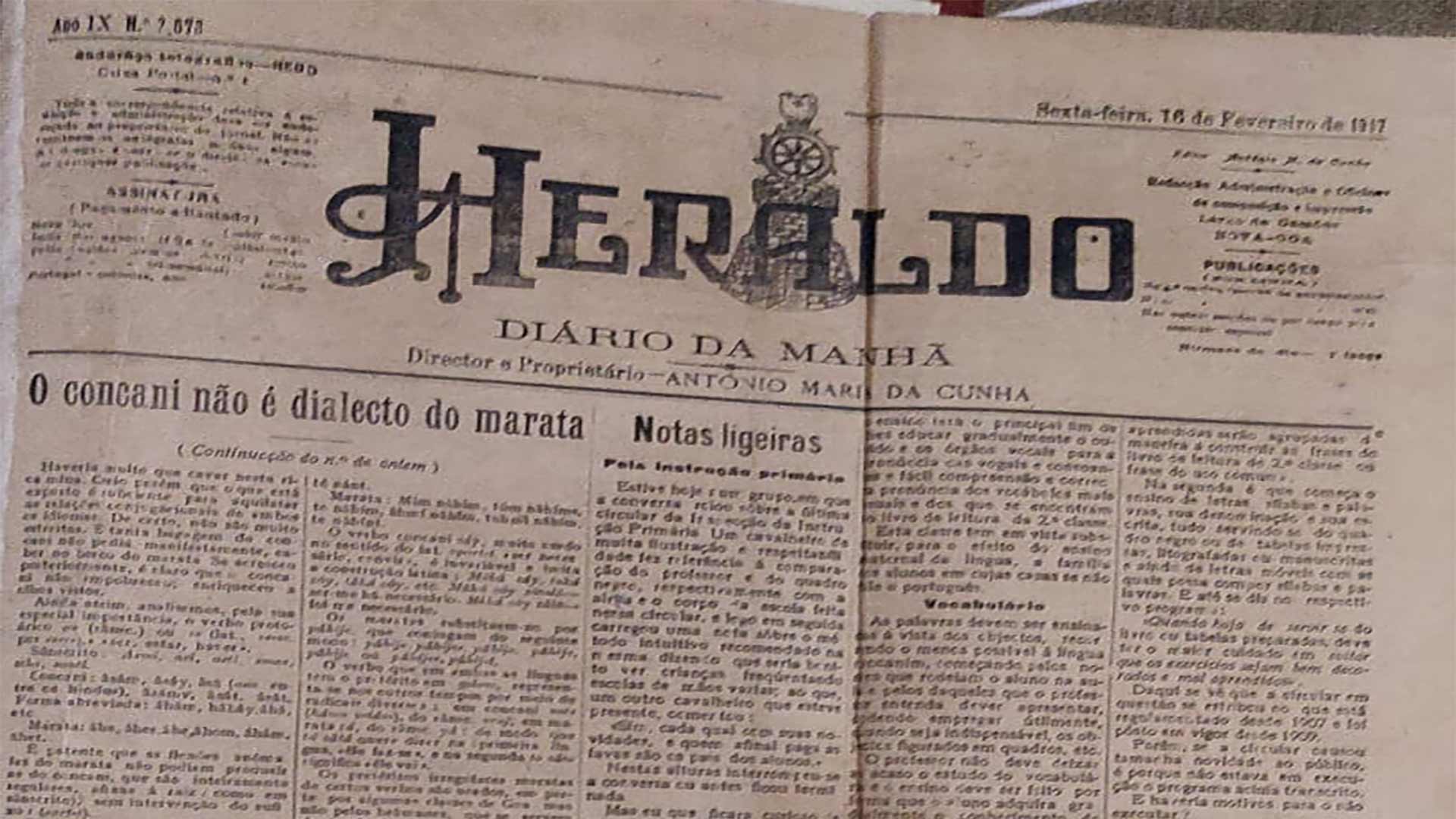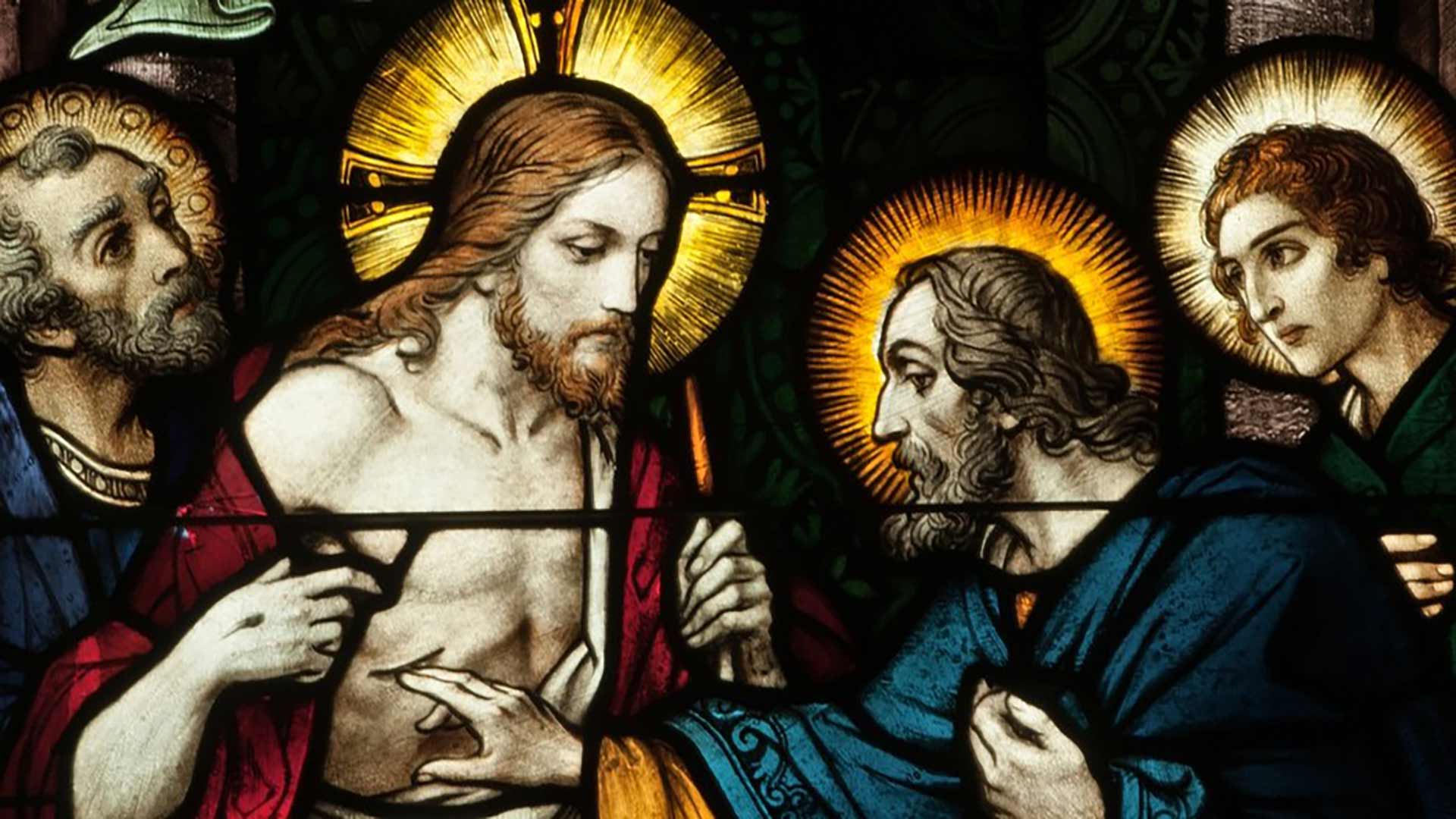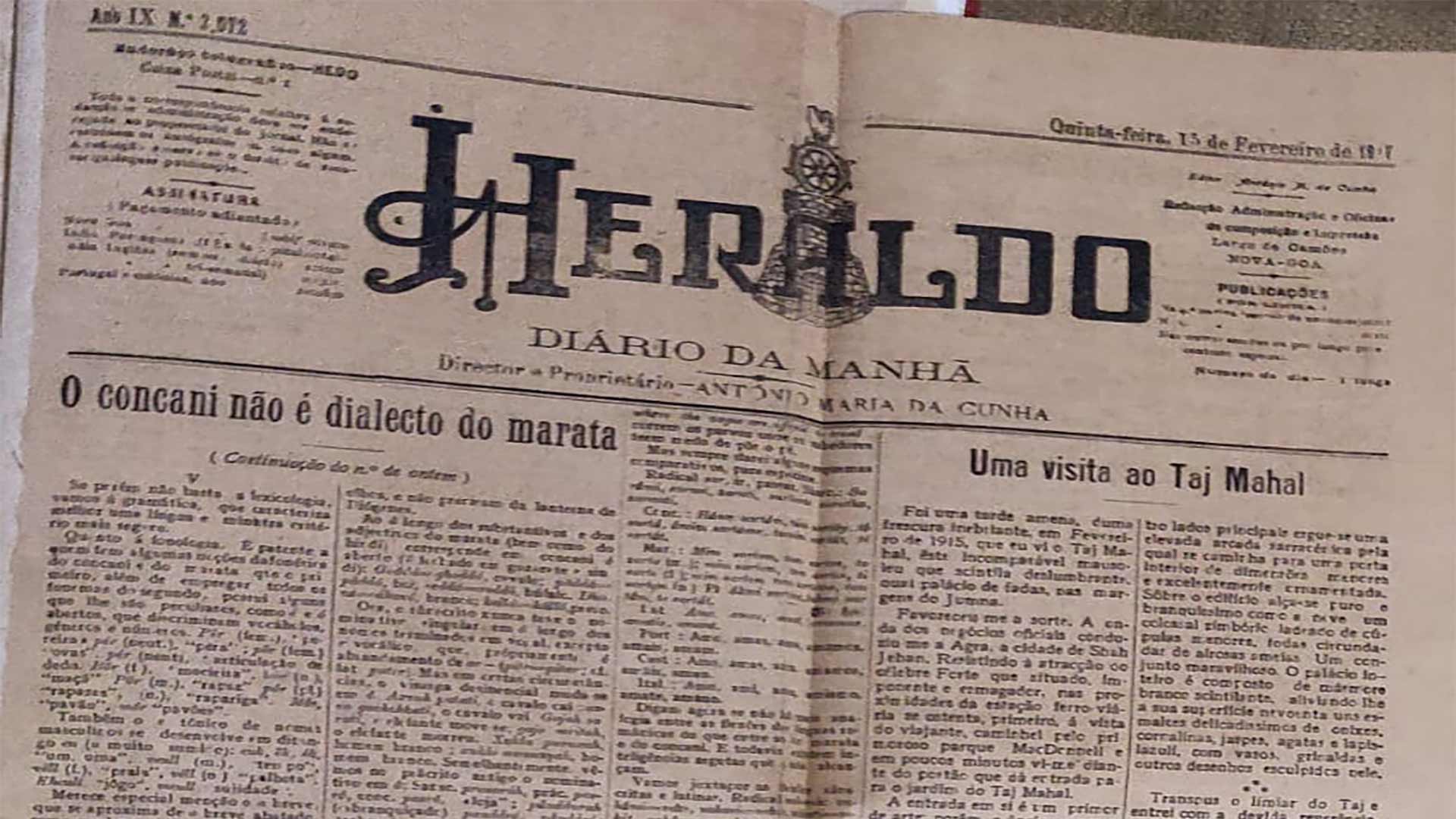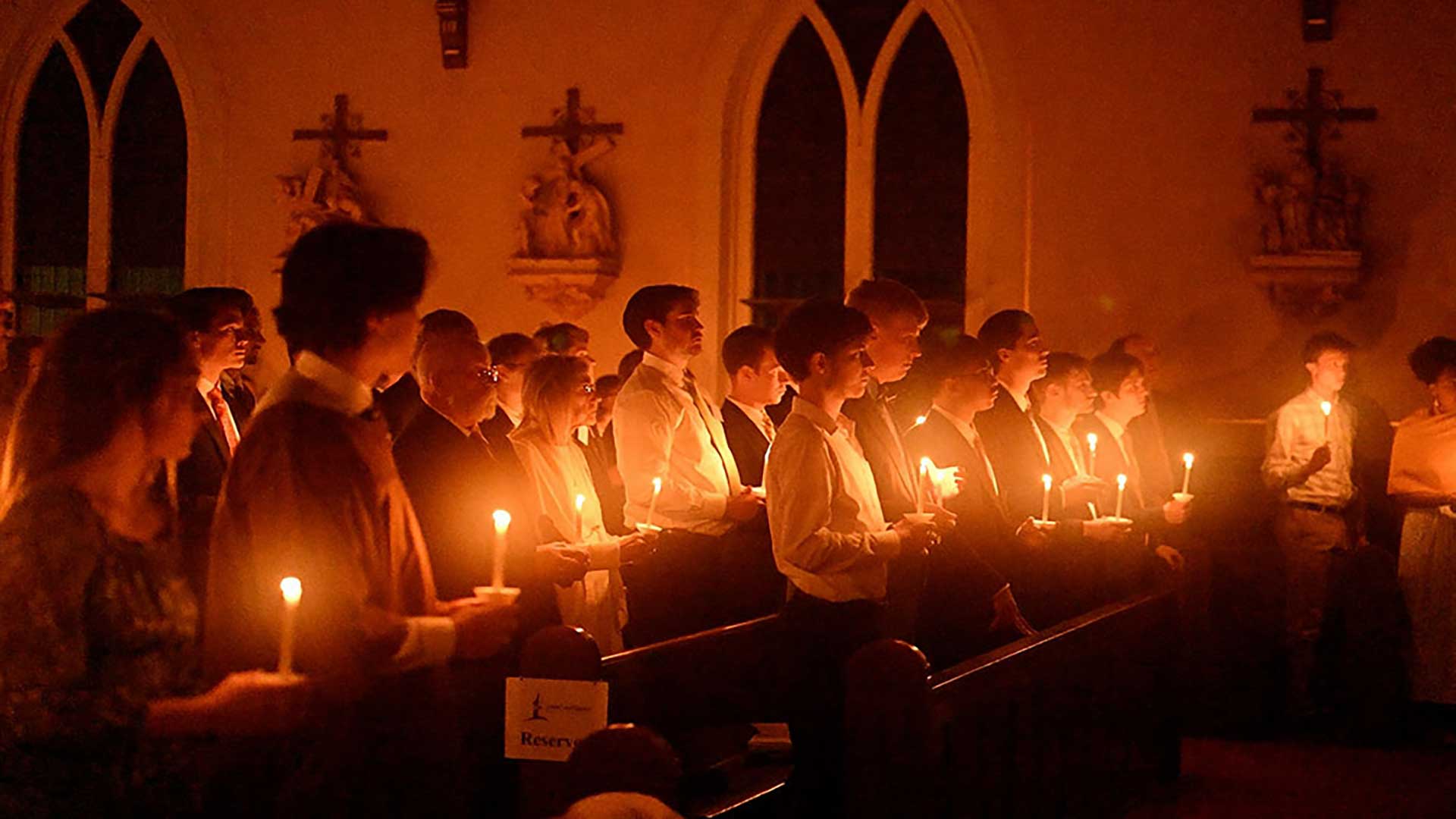Love and Salvation
Achieving peace of mind and heart is probably the one goal common to all of humankind. We live for it, and we even die for it. Happiness is all we seek, except that we sometimes use the wrong ‘search engines.’ And that makes all the difference. Ends do not justify the means; and at other times, not even knowing what our ends should really be is confusion worse confounded.
It is sad when we make of our life on earth an end in itself. We live as though our days will stretch out for ever and are blank on our eternal salvation. That is when Biblical posers like ‘What does it profit a man if he gains the whole world and loses his soul?’ (Mk 8: 36) makes us jump out of our skin. This has happened to so many who have gone before us – perhaps, most famously, to St Francis Xavier, whose date of arrival in Goa we commemorate tomorrow.
However, if we care to have the mind of Christ, we will not only appreciate the divine plan but also have our own perspective plan in line with it. His plans are based on love – because ‘God is love’, as St John puts it very plainly in the Second Reading (1 Jn 4: 7-10). Love is the very essence of God, and ‘he who loves is born of God and knows God, and he who does not love, does not know God,’ says the Beloved Disciple.
Further down in the text (not part of today’s Reading), the Epistler says, ‘No one has ever seen God, but if we love one another, God lives in union with us, and His love is made perfect in us.’ (1 Jn 4: 12) No doubt, some, like Moses, have seen God face to face, but as to the rest of us, since our physical eyes can perceive only the physical, even if in a limited way, we need to make a spiritual effort to see God, a spiritual and invisible being, with our mind’s eye.
We will never fully understand God, let alone see Him. And love: do we know how that works? Love is an overused, nay, abused word, whose true meaning is outlined by the Catechism of the Catholic Church (§§ 733, 1766, 1829, 2658). Love has been examined times without number by philosophers and poets, saints and sinners, yet few have done it justice. Meanwhile, the celebrated Catholic writer C. S. Lewis speaks of Affection, Friendship, Eros and Charity, in his book The Four Loves. He bases himself on the Greeks who distinguished between storge, philia, eros and agape, and demonstrates how very often they quite imperceptibly merge into each other.

Accordingly, affection or storge is familial love, or the ties we have with whoever and whatever we consider our very own. Friendship or philia covers those who we are naturally attracted to by the values we share. This is different from Eros, a passion primarily understood as sexual, but which could also be of an aesthetic or broadly (not necessarily holy) spiritual nature. Lewis discerns the deceptions and distortions that could well render these three natural loves dangerous if devoid of the sweetening grace of Charity or Agape, the divine love that must be the sum and goal of all.
Where do we find the supreme example of divine love? ‘God so loved the world that He gave His only Son, so that everyone who believes in Him might not perish but might have eternal life’ (Jn 3: 16). The Letter to the Hebrews puts it vividly: ‘In the past God spoke to our ancestors through the prophets at many times and in various ways, but in these last days he has spoken to us by His Son, whom He appointed heir of all things, and through whom also He made the universe’ (Heb. 1: 1-2). In effect, while Jesus has redeemed us of our sins, by His supreme example of love, He has also made God visible and accessible to us.
For His part, Jesus said: ‘Greater love has no man than this, that a man lay down his life for his friends.’ None that have claimed to be God ever did so, except Jesus, who died for our sake. That catchy line from today’s Gospel (Jn 15: 9-17) is followed up by a command: to love one another as He has done and to bear abiding fruit. What better way to set that love in motion than going out into the world and proclaiming the Gospel? As we see from the First Reading (Acts 10: 25-26, 34-35, 44-48), ‘God shows no partiality, but in every nation any one who fears Him and does what is right is acceptable to Him.... The gift of the Holy Spirit has been poured out even on the Gentiles.’
You and I are called to be instruments of God’s love, by giving witness to all, including the non-Christian world, as Peter did at the house of Cornelius the Centurion. We must not do anything in fear or for personal gains, but simply persevere in love; we need not worry about how we are to speak or what we are to say, for that will be given to us at the right time. Our love, sincere and self-sacrificing, must reflect God’s love. This will serve as evidence that God truly exists and that His Son is the Lord of our eternal salvation.
Konkani is not a dialect of Marathi - 6
Part 6 of “O concani não é dialecto do marata”, by Mgr. Sebastião Rodolfo Dalgado,
in Heraldo, Pangim, Goa, Year IX, No. 2574, 17 February 1917, p. 1
Translated from the Portuguese by Óscar de Noronha
The multiple, grave and fundamental divergences, both in terms of vocabulary and grammar, which we have perfunctorily examined, completely destroy the legend or fanciful assertion that Konkani is a dialect of Marathi, as its variant or phase, or as its daughter. Not even half of this would be necessary to constitute an autonomous and independent language.
It is said that against facts there are no arguments. Nor are there authorities. Unless it has something to do with past or distant events, testimony alone is of little value, if devoid of proof.
The body is there within everyone's reach. Any anatomist can dissect it, if he has the right instruments, and compare it, if he has experience and aptitude. But those who know nothing about pruning should not get into it, lest they spoil the vineyard.
It is a gross mistake to view Marathi as prototype of Konkani, or as its literary form. Such a pattern will necessarily distort the language, turning beauties into snags – as some Gongorists did in the past, with clumsy results – a monstrous amalgam. This should not be repeated in the future. With such an orientation and teachers, you can forget about cultivating Konkani. Let the language be!
Recently, it was stated that Konkani has been in existence for only about four hundred years, thus insinuating that it was a creation of the Christians. How cold-bloodedly can Goans make such audacious and paradoxical statements! Did they by any chance attend the délivrance – as they call it there, and it will not be long before they say ‘Our Lady of Bonne Délivrance’ – or at least have its birth certificate?
Prodigious Christians! They have invented a speech grammatically superior to Marathi and closer to the Prakrits and to Sanskrit!
And the amazement moves up another notch if we imagine how they imposed it on the Hindus in Goa and on the natives who went from here to as far as Bombay and Cochin, where I got to converse with a goldsmith in the said language!
Furthermore, the Hindu Brahmins who worked with Rheede on the Hortus Malabaricus (published in 1678) did not issue him a certificate in the ‘vernacular and literary’ language – Marathi – but in that monstrous Konkani; and the names that they gave to the plants were not taken from that ‘beloved daughter of Sanskrit’, but from its ‘nameless corruption’, namely: cudó, colassó, caló-dotiró, caró-nirvoló and many others. Some of them are marred by the convoluted orthography of Dutch, and the same is the case with Portuguese terms.
And the early Portuguese, who mention neither the Marathas nor their language, learned and used this gibberish, this ‘nothing’, as someone else chose to dub it, even while the country had a very developed vernacular and national language with a ‘vast and enjoyable literature’!
For example, Garcia de Orta, who spent many years in Goa, which he knew like the back of his palm, and who for his medical and botanical research took help from Kanarese (Hindu) physicians such as Malapa, writes panaj (jackfruit) and not phanaz; bibó (anacardium) and not bibá or bibbás bahó (canafistula), and not bavá or bahvá; rezanvalé (rozanvâlle), etc.
Similarly, Diogo do Couto, another Indianist di primo cartello, does not say ambá but ambó (Déc. VIII, I, 25). And António Bocarro (1635) does not say sissá, but sissó, nor does Father Francisco de Sousa (1697) employ Marathi diction when he writes charoddós.
Even the English were bewitched by this ‘unqualifiable dialect’, since it is in Konkani, and not in Marathi, that they looked for the origin of certain terms they used. Hobson-Jobson derives patamar from the Konkani, in the sense of ‘mail and vessel’: ‘In both senses the word is perhaps the Konkani path-mar, “a courier”.’ And as regards buckshaw, mentioned by Fryer, Hamilton and Grose, Yule writes: ‘“Little fish of any sort.” This is perhaps the real word’. Clearly, there are Konkani dictionaries that, in the opinion of the foreigners, deserve to be perused. And our scholars do not bother to read them, because they are not ‘comme il faut’. Good pretext for lazybones, no doubt: Language, why do I want you?
The last of the abovementioned words is indeed registered without its etymology, in my dictionary, under the forms bavxem and bapxem, and meaning ‘small fish, minnow’. But there will be always be a Konkanist emeritus who will declare that such a word does not exist, because he has not heard it, and that the dictionary is worthless. Jesus Christ forgot to include among the beatitudes: Beati ignari, qui sapientes se ostendunt! It is always more elegant to be a master than a disciple; it is more comfortable to teach than to learn.
Abiding with God
Today’s Readings make it clear that all is well when God is with us. But what about us: are we always with Him and for Him? Being on God's side may seem a natural thing, but we do reject Him sometimes, don’t we? Sin is to blame. It causes us to disbelieve. Hence, a turnaround is always in order and can make all the difference.
That is how it was in the life of Saul. In the First Reading (Acts 9: 26-31), we see how his life changed on his way to Damascus, in a personal encounter with the Risen Lord. Given his poor track record, however, the Apostles did not regard him as a disciple. Until Barnabas put in a word for him. He told them how Paul had boldly preached Jesus in the capital of Syria. In an about-face, Saul had become Paul.
‘Great things happen when God mixes with us,’ says a hymn. ‘Some find life, some find peace; some people also find joy…. Some see their lives as they never could before/ And some people find that they must now begin to change.’ That was the story of Paul too: he found life, peace, joy. Above all, he found the need to change. Enriched by special charisms, he argued among the Hellenists (Greek-speaking Jews), and eventually became one of the greatest spokesmen for Christ.
Meanwhile, St John in the Second Reading (1 Jn 3: 18-24) stipulates that love of God ought not to be limited to word or speech; it must be seen in deed and in truth. It is vital for love of God to translate into love of neighbour. Not a cakewalk, though. Very often, we only act civil and camouflage our bitterness. Worse still, if we do it for self-gain. Plain-speaking or forthrightness is preferable; it may make us vulnerable, but then, we have nothing to hide – or lose – anyway, do we?
It goes without saying that love must not be self-centred but God-centred. But to think that we can love by ourselves is an illusion; we can do so only with God's help. Human beings are selfish by nature, and trying to love neighbour before we learn to love God is like chasing an impossible dream. The fact is that mutual love would come more easily if everyone made an effort to put God before self. We cannot stress enough how God has to be at the centre of our attention.
To make God the be-all and end-all of our life, it would be ideal for members of our community to share the same understanding of Him. This is possible if we all seek the truth and are duly instructed. Proper catechesis would go a long way towards making up for heterodox ideas gaining currency in our midst. The world would find it easier to accept Jesus as our only Saviour, if Christians readily bore witness to Him. After all, Jesus has proved His Divinity. His Resurrection is the bedrock of our faith. Against this fact there can be no argument nor authorities or testimonies devoid of counterproof.
Earlier in the Easter season Jesus said: ‘I am the Bread of Life’ (Jn 6: 35); ‘I am the Light of the World’ (Jn 8: 12); ‘I am the Door’ (Jn 10: 9); ‘I am the Good Shepherd’ (Jn 10: 11, 14); ‘I am the Resurrection and the Life’ (Jn 11: 25); ‘I am the Way and the Truth and the Life’ (Jn 14: 6) – and in today’s Gospel (Jn 15: 1-8), He says: ‘I am the Vine’ (Jn 15: 5). He is the Vine; His Father, the Vinedresser; and you and I, the branches of the Vine. Every branch that bears fruit is pruned by the Heavenly Father that it may bear more fruit; every other that doesn’t, he takes away.
Thereafter comes a clincher: ‘He who abides in me and I in him, he it is that bears much fruit, for apart from Me you can do nothing.’ To abide in Him we have to be clean, be pruned of all our imperfections; to abide with Him means to keep His commandments. It is one thing to be patient towards those who have not had exposure to Christian doctrine; it is quite another to be complaisant towards those of our flock who consciously offend God, be it in words or deeds. Many mock Him openly, others adopt irreverent postures. This calls for some fraternal correction, or else, of love there will only be the shell.
St Paul calls us to be all things to all people. Yet, we must never act against moral principles merely to love others or be loved by them. It is futile to love others out of human respect (excessive regard for their opinions or esteem). No person is worth sacrificing a principle for; and it is ‘better to take refuge in the Lord than to trust in princes.’ Even a morally good act is meritorious only if done because it follows God’s law and is intrinsically good. In fact, only when human law is united with divine law, and human love with divine love, can divine life penetrate human life. That is when we will truly abide with God and He in us.
Ever faithful, never mute
Post-Easter Readings have a special freshness and power conveyed by the Holy Spirit. No matter what their perception of Christ earlier, the apostles now are fully convinced that He is the True God. Maybe they had looked at Him merely as a provider of material goods, be it bread or physical cures; they had failed to see Him as the spiritual provider – the Way, the Truth and the Life. By now they – and we too – know better.
The First Reading (Acts 4: 8-12) builds on what we read last Sunday. Peter, in treating a lame man, attributed the cure to the power of Jesus. Peter and John were still speaking in the Temple when some priests, the officer in charge of the temple guards, and some Sadducees got them arrested and jailed. When questioned by the Sanhedrin, Peter charged his countrymen with killing Jesus, whom God then raised from death. That the dead will one day rise to life was anathema to the Sadducees.
Peter went on to relate the present happenings to the Scriptures: ‘The stone that you the builders despised turned out to be the most important of all,’ said Psalm 117. He reiterated that salvation is to be found through Jesus alone; in all the world there is no one else who can save us. This was surely more than the self-righteous authorities could bear to hear. Understandably, those words also refer to God’s infinite love and to how ‘it is better to take refuge in the Lord than to trust in men.’
This is clearly a reminder that we have to repurpose our life in the light of what Peter has said. In the Second Reading (1 Jn 3: 1-2), his co-apostle John calls upon us to consider ‘what love the Father has given us’. Had He not loved us with a fatherly love, would He have sent us His Son Jesus? By the Incarnation and the Supreme Sacrifice on Calvary He showed us that He loved as His very own. Hence, we ought to be faithful. The fruits of our faithfulness may not be visible today, but ‘when He appears we shall be like Him, for we shall see Him as He is.’
The practical implication is that in every circumstance of our life we must turn our eyes heavenward for an answer. God works in and through us. Whereas the spirit of the world will always be antithetical to the spirit of God, it is of the essence that we keep the faith. When the Son of God returns, everything will become clear as day. The veil covering our immediate reality will be removed and we shall appreciate our glory as children of God. The once frolicking children of the world will then appear as children of darkness.
In fact, for those who have eyes to see and ears to hear, this is not rocket science. In a world teeming with life coaches and leaders of all kinds, all of them promising the moon but failing to deliver, today’s Gospel text (Jn 10: 11-18) calls to mind a most tender image of a caring God who promises absolute love and care and delivers it. To put it in context, Jesus had just cured a man blind from birth. When the temple authorities found him acknowledging the Son of Man, they summarily expelled him from the synagogue. It prompted Jesus to deplore the sin of spiritual blindness – the refusal to acknowledge God. And to give the man solace, Jesus presented Himself as the Good Shepherd. The Fourth Sunday of Easter is therefore called 'Good Shepherd Sunday'.
By this, Jesus evoked a scene that every Jew was familiar with: the self-sacrificing nature of a shepherd worth his salt. A good shepherd defends his flock against enemies, keeps watch over them and shuts himself up with them at nightfall. At dawn, he counts their number and leads them safely to fresh pastures. While he is with them, he now and again utters a shrill call; recognising his voice, the scattered sheep huddle around him. For sure, a stranger’s voice enticing them will not receive the same response, for the flock recognise him not.
Such is the case of every authentic shepherd and his flock. In a broad sense, the shepherd could be a parent, teacher, elder, counsellor; the sheep would be the children, students, youngsters, and those in need of counsel. Above all, it is the image of the church. The Pope is recognisably Jesus’ supreme representative on earth; he is the shepherd, we the flock. As much as the Pope is obliged to be a good shepherd, we are called to be good sheep. Jesus was also concerned about ‘other sheep that are not of this fold'; in His words, 'I must bring them also, and they will heed my voice, so there shall be one flock, one shepherd.’ The Pope has to do likewise. Together, we can build the Church, which is the Mystical Body of Christ. This is a mission in which the sheep must help their shepherd.
On the other hand, he who is only a hireling and not a shepherd will leave the sheep to the wolves and flee, for he cares not for the sheep. What, then, are we to do as sheep? We must be wary of false shepherds. And if by some misfortune the shepherd becomes a wolf, we the flock must defend ourselves.[1] As a community, we must shed our inhibitions, our goody-goody image. Aren’t we taught elsewhere in the Bible to ‘be shrewd as a serpent, yet innocent as a dove’ (Mt 10: 16)? So, both shepherd and sheep must stand up, speak up. We are called to be ever faithful, never mute.
Goencheo Mhonn'neo - VII | Adágios Goeses - VII
April 17, 2024Sayings and Proverbs,Goan Literature
Segue uma sétima lista de adágios,[1] extraídos do livro Enfiada de Anexins Goeses, obra bilíngue (concani-português), de Roque Bernardo Barreto Miranda (1872-1935)[2].
Concani | Tradução literal | Tradução livre
Dhazananchó sangat corsó nãy, ani coroddachyá ujyak chekuchém nãy. | Dha zannacho sangat korcho nhoi, ani koroddachea ujeak chekuchem nhoi.
Não tome todos como amigos,
(pode não dar bom fim,)
como também nunca se aqueça
ao fogo do capim.
Pantçuy bottâm sarquim nãy. | Panchui bottam sarkim nhoi.
Não tem igual dimensão
os cinco dedos da mão.
Toda a personalidade
não tem a mesma habilidade.
Sunyanchi chemp noliyênn ghalyar passunn, sarky zay na.| Suniachi chemp nollien ghalear pasun, sarki zaina.
O rabo de um cão
que é torto, se o ajeita,
pondo-o ainda num tubo,
nunca se endireita.
Torna-se impossível
corrigir quem de índole
é incorrigível.
-o-o-o-
[1] Cf. sexta lista, Revista da Casa de Goa, Série II, No. 26, janeiro-fevereiro de 2024, p. 43.
[2] Roque Bernardo Barreto Miranda, Enfiada de Anexins Goeses, dos mais correntes (Goa: Imprensa Nacional, 1931), com acrescentamento dos adágios na grafia moderna, pelo nosso editor associado Óscar de Noronha.
(Publicado na Revista da Casa de Goa, Série II, No. 27, março-abril de 2024, p. 47)
Glow of the Resurrection
The more we think of the crisis of faith and morals in Jesus’ times, the better we understand our own. Our prayer should therefore be that we appreciate the Easter message. It throws the spotlight on the glory of the Resurrection, which is not a mere symbol but a reality, the bedrock of our faith.
Public support for Jesus began to snowball after the Resurrection. Our Lord was at work every day, through the marvellous acts of the Apostles. Peter came out particularly strong. He had the glow of the Resurrection. As today’s First Reading (Acts 3: 13-15, 17-19) indicates, he continually testified to Jesus. While he charged his countrymen with the heinous crime of killing ‘the Author of Life, whom God raised from the dead,’ he made allowances for their frailty and exhorted them to repent.
What about us? Do we draw hope from the Resurrection and the scope for repentance? In her Apparitions worldwide, Our Lady stressed that the world has greatly offended Her Son. We laypeople have done so by our indifference, not to say deliberate silence, always expecting the authorities to set the tone and show the way. Meanwhile, in ecclesiastical governments – as it has long been in civil too – the tables have been turned. Sadly, matters of faith and morals have become a worldwide cobweb. And caught up in their own webs, lawmakers and enforcers have become lawbreakers and perverters.
The Church is thus at the crossroads. We Christians had better bear witness to Christ or perish. At present, seduced by the world, many – be it priest, politician or people – seem to be trying it the other way around: brazenly counter-witnessing to save their skins… In the process we let the Mystical Body of Christ be targeted, wounded, mangled... all in the name of forgiveness and tolerance! May the first Pope’s words pierce into the deepest recesses of our hearts, for hell is most likely bursting at the seams: ‘Repent, therefore, and turn again, that your sins may be blotted out, that times of refreshing may come from the presence of the Lord.’
In the Second Reading (1 Jn 2: 1-5), Christ’s Beloved Disciple makes an equally fervent appeal: ‘I am writing this to you so that you may not sin.’ His assurance that Jesus Christ the righteous is ‘the expiation for our sins, and not for ours only but also for the sins of the whole world’ emboldens us indeed. But then again, let us not put God to the test; let us quickly and sincerely work towards a change of heart and mind.
The Epistler goes on to warn his people: ‘He who says, I know Him, but disobeys His commandments is a liar, and the truth is not in him; but whoever keeps his word, in him truly love for God is perfected.’ To help us truly love God and to perfect the law, which the Sanhedrin had corrupted, was the purpose of Jesus’ coming to the world. We need Jesus to come again and do away with that new Sanhedrin taking root in our beings, in our homes and workplaces, in our schools and communities; and we must not let it be embedded in our Church. It would mean crucifying Our Lord and His Bride yet again. Down with such a Sanhedrin!
The point is that we need to renew our encounter with Christ! From the Gospel (Lk 24: 35-48) we realise that Emmaus is our daily beat after all! Christ walks with us, but we fail to notice Him; He daily bears our burdens, but we do not acknowledge the fact; He continually talks to us, but we answer not. And what if He should show us His hands and His feet nailed for our sake? Would we wake up from our slumber and gird ourselves, or feel troubled and faint?
'Lift up the light of your face on us, O Lord's (Ps 4). Let the glow of the Resurrection remain with us forever. May our spiritual renewal, fired with the spirit of the Resurrection, help us proclaim the Good News of Christ our Lord to the world!
Konkani is not a dialect of Marathi - 5B
Part 5[B] of “O concani não é dialecto do marata”, by Mgr. Sebastião Rodolfo Dalgado,
in Heraldo, Pangim, Goa, Year IX, No. 2573, 16 February 1917, p. 1
Translated from the Portuguese by Óscar de Noronha
There is a lot more to dig in this rich mine. I believe, however, that what has been laid out here is sufficient to understand the conjugational relations between the two languages. For sure, they are not very close. And so much of Konkani’s baggage definitely would not fit into the Marathi boat. It may have got bigger later, but surely Konkani was not the poorer for it; it rather got perceptibly richer.
Even so, given its special importance, let us analyse the Indo-European verb as (Sansk.) or es (Lat., es-se for es-re), to be, to have.
Sanskrit: Asmi, asi, asti, smas, stha, santí.
Konkani: âsám, âsáy, âsá (asa, among the Hindus), âsámv, âsát, âsát. Abbreviated form: âhám, hâháy, âhá, etc.
Marathi: âhe, âhes, âhe, âhom, âhám, âhet.
It is obvious that the anomalous flexions of Marathi would not produce those of Konkani, which are entirely regular, affixed to the root (as in Sanskrit), without the intervening suffix t (sart-t).
The past tense in Konkani uses the base as: âslom, âsloy, etc. That of Marathi is: hotom, hotás, hotá, etc. That is a huge difference – toto coelo – and does not discredit Konkani.
Another Sanskrit verb, jan (3rd p. pres., jâyate), to turn, to become, to get (French, devenir) passed on to Konkani in the stem zá (zátam, zátáy, zâtá), and is conjugated regularly in all tenses. Marathi, on the other hand, uses the said verb only in the past tense (jhâlom), replacing it, in the rest, with the verb honnem, derived from the Sanskrit bhû, which has given rise to the Lat. fu-i.
It is obvious, then, that these are not despicable minutiae that can be easily explained as ‘the degeneration of Konkani taken to extremes.’ On the contrary, they are fundamental divergences, and the aforementioned verbs are so too. It is rightly said in Konkani, when one hears nonsense: Tujé jibek hadd na munn borem âsá: You’re lucky that you don't have a bone in your tongue, or else it would break. And another popular saying goes as follows: Tuka jib nasli zâlyár kavlle tonchún kâtelé âslé: if you had no tongue (the only sign of life), crows would peck and eat you (as if you were a corpse).
Let us also compare the flexions of the same substantive verb to be in the Romance languages, so that the comparison highlights the inconsistency of the detractors of their own language, which they have never cared to study.
Latin: Sum, es, est, sumus, estis, sunt.
Portuguese: Sou, (archaic som, sam), és, é, somos, sois, são (archaic, som) [I am; thou art; he/she/it is; we are; ye/you are; they are]
Castillian: Soy, eres, es, somos, sois, son.
Italian: Sono, sel, è, siamo, siete, sono.
French: Suis, es, est, sommes, êtes, sont.
Is there less affinity between these flexions than between the previous ones? And yet, to this day no one has dared claim that one of the said languages is a corruption of the other. And according to an English proverb (may everything pay homage to the alliance!): What’s sauce for the goose is sauce for the gander.
Let us now compare the negative forms of the aforementioned verb as:
Konkani: Hámv nám, túm námy, tó nám, ámím nâhv, tumim nánt, té nánt.
Marathi: Mîm nâhîm, túm nâhíms, to nâhím, âhmí nâhim, tuhmi nâhim, te nâhínt.
The Konkani verb záy, often used in the sense of the Latin oportet, it is necessary, it is proper, is invariable and mimics the Latin construction: Mâká záy, tuká záy, táká záy, etc. Mâká zây zataló = it will be necessary for me. Mâká záy zâló = it was necessary for me.
Marathi uses pâhije, which they conjugate as follows: pâhije, pâhijes, pâhije, pâhije, pâhije or pâhijes, pâhijet.
The verb that in both languages has the past tense in gelom is represented in the other tenses by means of various radicals: in Konkani, vats (hámv vetám), from the Sansk. vraj; in Marathi, zá, from the Sanskrit yá: such that in Konkani tó zâtá means ‘he becomes’, and in Marathi to zâto means ‘he goes.’
The irregular Marathi past tenses of certain verbs are used, partly by some social classes of Goa, but not by the Brahmins, who use it otherwise: Ghetlem = ghelem (regular), was taken; dhutlem = dhulem (reg.), was washed; pyâlem = piyelem or pilem (reg.), was drunk; mâgitlem = mâglem (reg.), was asked for[i]; ghâtlem = ghâlem (reg.), was put; mhanttlem = mhannlem (reg.) or mhullem (by assimilation), [was said]; khâllem = khelem (khâlem would be regular), was eaten.
I could have expanded on this arid and, for many, boring matter, tackling particles and syntax, but I think it is pointless. As regards the former, it will suffice to note that many of them differ from language to language or take diverse forms. Some of them in Marathi are used only by certain classes in Goa; which may be due to ethnic relations. It is a matter more closely associated with lexicology than with grammar; and the comparison is not tough.
Properly speaking, the syntax of modern Indo-Aryan languages has few essential differences. Sentence construction and agreement are almost the same. However, Marathi and Konkani vary a lot in the manner of forming propositions; in ‘our language’, it is more concise, cohesive and elliptical. Here are some examples, taken from Navalcar's Marathi grammar: Râma ânni tyâtsá bâp âle âhet = Râmá âni tâtsó bâpúi áylé: Rama and his father have come. Durgá ânni Sâvitri hyâ bahinni hotyá = Durgá áni Sâvitri bahinnyó: Durga and Savitri are sisters. Janoji va tyâchi báyko kutthem gelim âhet = Janoji âní tâchî bâyl khaim gelint? Where have Janoji and his wife gone? Vaidyânem tilá auxadh deún barem kelem = Vaizan tiká okhat diún bari keli (agreement difference): The doctor cured her by giving her medicine. Mim tum’chyá gharim udyám yein = Hámv tum’ger phalyá yen or yeyn (I may come) or yetalom = I shall come: I shall come to your house tomorrow.
Those interested can easily make other syntactical comparisons, for example, between a catechism in Konkani and Marathi. Rest assured that one will learn a lot about the disparity of the two languages and be convinced – if any more arguments are necessary – that Konkani is not the same as Marathi.
-o-o-o-
[i] Dalgado’s says ‘foi bebido’, which is obviously a typo; it should read ‘foi pedido’ [was asked].
(Published in Revista da Casa de Goa, Series II, No. 27, March-April 2024, pp 38-41)
CBCI and the Apostles
Last Sunday we witnessed the Resurrection of our Lord Jesus Christ, by far the greatest event of heaven and earth. We celebrate it every year, and it has perhaps become clichéd. But then, we would do well to remember that the Resurrection is central to our faith. What happened to Jesus is a promise to every Christian; by His resurrection we know that we, and all who have gone before us, will be raised from the dead.
The earth-shattering happening resounded hugely in Jerusalem. To begin with, Peter and John, Mary of Magdala and other women of Galilee encountered the Resurrected Lord on Easter morning; and that evening, He appeared to two on their road to the hamlet of Emmaus. And while some of the disciples failed to accept their Master’s Resurrection as true, Jesus stood in their midst, saying, ‘Peace be upon you.’ After mildly reproaching them for their scepticism, He went on to reassure and convey to them His power.
As a result, when asked by the Sanhedrin, ‘By what power or by what name did you do this [healing]?’, Peter replied boldly: ‘… by the name of Jesus Christ of Nazareth, whom you crucified, whom God raised from the dead…’ The priests had nothing to say in opposition to the healings, but warned the Apostles to speak no more to any one or teach in Jesus’ name. Peter and John retorted: ‘Whether it is right in the sight of God to listen to you rather than to God, you must judge; for we cannot but speak of what we have seen and heard.’
In short, that is what transpired in the first week of Our Lord’s Resurrection; that was the fire with which the Apostles spoke, convinced of Christ’s divinity. Contrast it with the recent whimper of the Catholic Bishops’ Conference of India (CBCI), purportedly to help address ‘emerging challenges due to the current socio-cultural, religious, and political situation’[1] in the country. The CBCI is the apex decision-making body representing the Catholic community in India; but do their decisions inspire and embolden the Catholic fold, or do they, instead, gaslight and dishearten the community?
-o-o-o-
After the Easter week, during which we read from the Acts of the Apostles, considered the second part of St Luke’s Gospel and makes up the First Reading (4: 32-35), we have yet another text that relates the apostolic labours and first steps taken by the Christian community. The Church considers the Acts a precious guide and exemplary stimulus for the life of Christians: it portrays how they went from listening to the Word to developing the faith; from Baptism to solidarity; from persecution to martyrdom.
‘The company of believers were one of heart and soul,’ says the physician-author Luke. Thus enthused, they found no point in owning things; they held them in common. This practice, however, was never obligatory but purely voluntary; it does not favour the socialist ideal or go against the concept of private holdings. The believers’ focus was on testifying to the Resurrection. And great was the grace among them; with all receiving due attention, there was no needy person among them. They worried not about their life, about what they would eat or drink, or about their body and what they would wear. (Cf. Mt 6: 25)
Truly, our life is more than food, our body more than clothing. What’s more, our Resurrected Lord gives us life, and life in abundance. We should not be concerned about rejection, for the stone which the builders rejected finally became the cornerstone. Such is the work of the Lord, a marvel in our eyes, says the Psalm. Hence, dear CBCI, ‘when they hand you over, do not worry about how you are to speak or what you are to say; for what you are to say will be given to you at that time.’ (Mt 10: 19)
In the Second Reading (1 Jn 5: 1-6), St John makes a rare appearance[2] through his epistle. He assures his community, possibly based in proconsular Asia[3], that God’s commandments are ‘not burdensome. For whatever is born of God overcomes the world; and this is the victory that overcomes the world, our faith. Who is it that overcomes the world but he who believes that Jesus is the Son of God?’ This is not a simple text; here, the Beloved Disciple of Christ counters the Gnostics who denied the Incarnation and Death of the Son of God. Hence, the Epistler affirms that ‘this is He who came by water and blood, JESUS CHRIST, not with the water only but with the water and the blood.’ That is to say, God did not abandon Jesus before his Passion and Death.
If it be natural for one to fear bloodshed, is it not supernatural that martyrs have had the courage to shed their own? The Gospel (Jn 20: 19-31) tells us how on the evening of the Resurrection, the doors being shut where the disciples were, for fear of the Jews, Jesus came and stood among them, saying, ‘Peace be with you.’ He had returned to fulfil His promise at the Last Supper. He now commanded them to go out into the world and proclaim the Good News of Salvation; he also imparted them the sublime power to forgive sins (Sacrament of Penance). Although among them was one who doubted – Thomas – in a bit he too was touched and transformed by the Lord. And then, he touched India and transformed us.
May the CBCI, you and me be inspired by the example of St Thomas the Apostle of India, who is wrongly labelled ‘Doubting Thomas’. He sent forth the highest profession of faith in Christ’s divinity: ‘My Lord and my God!’ Let us, then, with our hearts set on fire, have recourse to him who once doubted, but not for long, and ever after acted strong. And on this Feast day of Divine Mercy, meant to be a special refuge and shelter for the consolation of souls, may we grow in the love of God and merit His mercy always.
-o-o-o-
[2] ‘The First Letter of John is the ONLY biblical book that is included in its entirety in the Lectionary for Mass! It is scheduled to be read every year on the weekdays of the Christmas Season, although not all of it is read in any particular year, depending on which days of the week Christmas and Epiphany are celebrated. On Sundays and Major Feasts, only about one third of 1 John is read (mostly on the Sundays of Easter in Year B). Selections from 1 John are also recommended or optional for several Saints Days and various other Masses. In contrast, the Second and Third Letters of John are never read on Sundays and never recommended for special Masses, but only one short reading from each letter is scheduled for a weekday Mass every two years.’ https://rb.gy/bwjmxd
[3] The Roman province of Asia, whose most prominent cities were Ephesus, Sardis, Pergamon and Aphrodisias (modern names: Selcuk; Sart; Pergamos; Geira, all in Turkey). A proconsul was in charge of the Asian province.
Konkani is not a dialect of Marathi - 5A
Part 5[A] of “O concani não é dialecto do marata”, by Mgr. Sebastião Rodolfo Dalgado,
in Heraldo, Pangim, Goa, Year IX, No. 2572, 15 February 1917, p. 1
Translated from the Portuguese by Óscar de Noronha
If, however, lexicology does not suffice, let us look at grammar, which better characterises a language and provides a safer criterion.
As regards phonology, it is obvious to whoever has some notion of Konkani and Marathi phonetics that the former, besides employing all the phonemes of the latter, has some unique ones, such as open é and ó, which distinguish words, genders and numbers. Pêr (fem.), guava tree, and pér (neut.), guava; pêr (fem.), roe, pér (neut.), finger joint. Bôr (f.), jujube tree, bór (n.), jujube. Pôr (m.), lad, pór (pl.), lads, (n.), girl. Môr, peacock, mór, peacocks.
The tonic e of masculine nouns also develops into diphthong eu (very faint u): euk, êk, ék, one, one, veull (m.), time, vêll (f.), beach, véll (n.), pick, kheull, game, meull, dirt.
The short a deserves special mention; it is close to the muffled and short o, as in Bengali, or better, as in the English u in but, cut.
It also has another notable peculiarity: that of being, like the open and closed o, contingent on the genders. The a of bhirandd, mangosteen tree, and the a of bhirandd, mangosteen, are not pronounced identically, except perhaps by a child in diapers. Also compare the second a of kharadd (f.), shavings, with that of kharadd (n.), bald head; that of karadd (f.), dryness of tongue, with that of karadd (n.), grass. Those who fail to understand this may be capable of speaking the Bunda language, which does not require great expertise, but they certainly do not understand the phonics techniques of Konkani. It is said that honey is not meant for the ass’s mouth.
Similar to the pre-consonantic tonic e of masculine nouns, the long á of certain feminine nouns develops into a regressive diphthong eá (or yá) with muffled e: sattyá = Sansk. sattá, authority. Tarhyá = Mar. tarhá, from the Arabic tarhá, type, manner.
The ch and j, when not preceding e and i, always sound ts (or tç) and z, without etymological restrictions; which is not the case with Marathi. Sansk. chal = tsal, go; char = tsar, folder; chakra = tsak, wheel; Râjâ = rázá, king; jana = zann, person; jati = zát, caste. People observe the logical coherence instinctively and send the etymologists packing. But in our eccentric Goa there are philological heavyweights armed with a ferule: they disregard such a clear truth! Or else, they would not be pinchbeck scholars nor would they be acclaimed by puppets.
Furthermore, the initial h and the h of aspirated consonants is not as sonorous as in Marathi, and many of the Marathi cacuminal initials correspond to the respective dentals in Konkani.
Can all these peculiarities be borne out by the evolutionary process or, if unscientific detractors so wish, by later corruption? And how is it that identical phenomena are unheard of in other Marathi areas? And will not at least such elements be useful to establish the autonomy of a language?
With regard to morphology: if there was anyone who, comparing the declensions and conjugations of Konkani and Marathi, has found complete uniformity, he was blind in spirit. The multiple and grave discrepancies are, as the English say, glaring; they stand out and can do without the lantern of Diogenes.
The long á of the nouns and adjectives in Marathi (as well as Hindi) corresponds in Konkani to open ó (closed ô in Gujarati and Sindhi). Goddá = ghoddó, horse; pâddá = pâddó, bull; reddá = reddó, buffalo; dhava = dhavó, white; kallá = kâlló, black.
Now, Sanskrit has never had the nominative singular in long â of the nouns ending in a vowel, except for vocalic r, which, really speaking, is a softening of ar (pitr = pitar; cf. Lat. pater). But under certain circumstances, the desinential visarga changes to ô. Axvah patati, the horse falls; axvo gachchhati, the horse goes. Gajah sarati, the elephant moves; gajo mritah, the elephant died. Xukla puruxah, white man; xuklo manuxyah, white man. Similarly, in ancient Prakrit we see the nominative in ó: Sansk. prasaráh, Prak. pasró, Konk. pasró, shop; pânddurah (whitish), panddrô, pânddrô, king cobra; devarah, devarô, dêr, brother-in-law. Konkani is not in bad company.
The same difference between á and ó is seen in masculine genitive terminations: âmbyáchá = âmbyatsó, of the mango, – in the nominative plural of feminine nouns (ô): gaddyá = gaddyô, cars; and in the verbs (3rd person) (sing., perf. indicative) utthlá = utthló, stood up.
The terminations nem and xim of the Marathi instrumental correspond to n in Konkani, and to lá and s of the dative, k (ko in Hindi, ke in Bengali): âmbyânem (by the mango), âmbyâxim (with the mango) = âmbyan (with or by the mango); âmbyálá or âmbyas, âmbyak (to the mango).
The terminations of the nominative plural of neuter nouns also differ: motyem = motyám, pearls; gharem = gharám, houses.
Konkani has a formal locative on, which Marathi represents periphrastically: mathyár = mátyá var, on top of the head; gharámr = gharám upari, on the housetops.
There are nouns that have one base or theme in Konkani and another in Marathi = hatti (dental tt) = hattyán = háttinem, by the elephant; bhint = bhintyechí = bhintichi, of the wall; khâtt = khâttichem = khâttechem, of the bed.
We have already seen that the nominative and the instrumental of the first-person pronoun are not the same in both languages. Let us now compare other cases and other pronouns. Dative. Mâká (cf. Sansk. mayam, Lat. mihi, which is sometimes pronounced as miki) = mâlá, to me; âm’kám = âhmâlá, to us. Tuka, tulá, tujlá, to you; tum’kam = tuhmâlá, to ye/you. Tâká or teká = tyâlá, to him, etc. Instrumental: tuvem = tvá, for you. Tannêm, tínnem = tyannêm, tinem, by him, by her. The same is to be said of the demonstrative hó, this, and the relative zó, that: hâká, zâká, hânnem, zânnem.
The conjugational differences between the two languages are so many that I do not know how to deal with them in a few words. It would be necessary to reproduce entire paradigms of various verbs to help one get a complete idea. Those who feign ignorance, and those who consider themselves all-knowing, will stay put; those who sincerely wish to study will find half a dozen grammars. But there are some people out there who swear by all gods that Konkani has no grammars and dictionaries comme il faut! Might they have examined them all? And are there many Marathi-Portuguese dictionaries, and vice-versa, and grammars comme il faut? The English put it nicely: ‘Fools rush in where the wise fear to tread.’
I will nevertheless present some corroborative schema as specimens.
Radical sar, to go, pass. Sansk. Sarâmi, sarasi, sarati, sarâmas, saratha, saranti.
Konk. Hámv sartám, tum sartây, tó sartá, ámim sartam, tumim sartát, té sartát.
Mar. Mim sartom, tum sartos, to sarto (m.); mim sartem, tum sartes, ti sarte (f.) mim sartem, tum sartem, tem sartem, (n.) Pl. âhmi sartom, tummi sartám, te sartát.
Lat. Amo, amas, amat, amamus, amatis, amant.
Port. Amo, amas, ama, amamos, amais, amam. [I love, thou lovest, he/she/it loves, we love, ye/you love, they love]
Cast. Amo, amas, ama, amamos, amais, amam.
Ital. Amo, ami, ama, amiamo, amate, amano.
Now, is there not a closer analogy between the flexions of the Romance languages than between those of Marathi and Konkani? And yet there are sharp minds that do not realise it.
Let us juxtapose Sanskrit and Latin flexions. Radical vah-veh: vahâmi = veho, vahasi = vehis, vahati = vehit, vahámas = vehimus, vahatha = vehitis, vahanti = vehunt. Are not these flexions more akin to each other than are those of Konkani and Marathi? Might Latin, then, be a corruption of Sanskrit? There are no people more exacting than the Goans.
Past perfect. Konk.: Hámv sarlom, túm sarloy, tó sarló (m.), hámv sarlim, túm sarliyi, ti sarli (f.), hámv sarlem, túm sarlemy, tem sarlem.
Mar. Mim sarlom, túm sarlas, to sarlá (m.), mim sarlem, tum sarlis, ti sarli (f.), mim sarlem, túm sarlens (n.) Is the daughter a faithful likeness of the mother?
Imperfect: Konk. Sarom, saroy, saro, saromy, sarot, sarot. Mar. sarem, sares, sare, sarúm, saram, sarat.
Konkani has another formal imperfect, made up of the base of the present tense and the flexions of the perfect; and that has no counterpart in the other language: sartâlom, sartaloy, sartâló (m.), sartalim, sartâliy, sartáli, etc.
At the same time, the past perfect, formed by adding ló to the perfect: sarló, it ended; sarloló, it had ended.
Future. Konk.: saran, sarxi, sarat, sarâmv, sarxyát, sartit. Mar.: saren, sarxil, sarel, sarúm, saral, sartil.
How much parity is there between one and the other?
The aforesaid Konkani future is contingent (as Maffei calls it, if you know) or potential: karít, may be able to do it, may wish to do it, maybe doing it, may do it; páus paddat, it may rain, perhaps it will rain. But we have another future, absolute and more assertive, which in Portuguese is expressed as há de [will]: há de chover [it will rain], which differs from choverá [it will rain].[i] Marathi does not have it in a simple form; Konkani, on the contrary, forms it with the flexions of the past tense joined to the base of the present, ending in a (sarta), or to the present participle (sartó): sartalom, sartaloy, sartaló, etc.
-o-o-o-
[i] Both Há de chover and choverá express the future tense, except that that the former is in the periphrastic form.
(Published in Revista da Casa de Goa, Series II, No. 27, March-April 2024, pp 38-41)
The Holy Night of our Lord's Return
March 30, 2024What is Easter Vigil?Easter
The Church today observes solemn vigils[1] for Christmas, Easter, and Pentecost. The Easter Vigil, which begins on the evening of Holy Saturday, has by far the longest, the most ancient, the most sacred, the most profound and most beautiful of all the liturgies of the Catholic Church. St Augustine has called it ‘the mother of all vigils.’
The Easter Vigil is divided into four parts: Service of the Light; Liturgy of the Word; Liturgy of Baptism; Liturgy of the Eucharist, as follows:
SERVICE OF THE LIGHT: This begins outside the church building. Whereas inside, the holy water fonts are drained, the tabernacle is empty and the lights are out; outside a new fire is lit and blessed, as a symbol of life. The priest uses a stylus to cut a cross into a Paschal Candle. Then he makes the Greek letter Alpha above the cross, the letter Omega below, and the four numerals of the current year between the arms of the cross. The Paschal Candle symbolises Christ, the Light of the World, the Beginning and the End, and to Whom all time and ages belong.
The traditional Easter song follows, sung usually by a deacon: the Exultet (Easter Proclamation). ‘This magnificent hymn, which is remarkable for its lyric beauty and profound symbolism, announces the dignity and meaning of the mystery of Easter; it tells of man's sin, of God's mercy, and of the great love of the Redeemer for mankind, admonishing us in turn to thank the Trinity for all the graces that have been lavished upon us.’[2]
LITURGY OF THE WORD: It comprises nine Readings, seven from the Old Testament and two from the New Testament.[3] They help us meditate on God's wonderful works for His people since the beginning of time:
- Story of Creation (Gen 1: 1-2; 2)
- Abraham put to the Test (Isaac) (Gen 22: 1-18)
- Moses and the People crossing of the Red Sea (Exodus 14: 15–15; 1)
- The New Zion (Isaiah 54: 5-14)
- God’s Invitation to His People (Isaiah 55: 1-11)
- In Praise of True Wisdom (Baruch 3: 9-15.32–1:4)
- Renewal of Israel (Ezekiel 36: 16-28)
- Dying and Living with Christ (Epistle, Romans 6:3-11)
- The Resurrection (Gospel, Year A: Mt 28:1-10; Year B: Mk 16:1-7; Year C: Lk 24:1-12)
The Gloria is sung before the Epistle, and the Alleluia before the Gospel.
LITURGY OF BAPTISM: Water is blessed, signifying new life; new members are brought into the Church through baptism and those who were baptized but have not received the other sacraments of initiation. The catechumens and these faithful are confirmed and later receive the Holy Eucharist. Then, the faithful are blessed with water and all renew their baptismal promises, reliving the Resurrection and understanding their identity as a People of God. Part of the liturgy includes the Litany of the Saints.
LITURGY OF THE EUCHARIST: The Mass continues, with special prayers inserted during the Eucharist Prayer, and concludes with a solemn blessing: to defend us from every assault of sin; that we may be endowed with the prize of immortality; that we may celebrate the gladness of the Paschal Feast and come with Christ's help, and exulting in spirit, to those feasts that are celebrated in eternal joy. The Mass closes with the glorious singing of the dismissal: ‘Go forth, the Mass is ended, alleluia, alleluia’ or ‘Go in peace, alleluia, alleluia’.
Clearly, the Easter Vigil liturgy is of exceeding beauty and unending splendour. It is a blessing to be a part of this most sacred night when, together with the sons and daughters of the Church scattered throughout the world, we await our Divine Master’s return in glory. We stay up with our lamps full and burning, hopeful that our Resurrected Lord will give us a seat at His table, that is to say, a share in His triumph over death and life eternal.
-o-o-o-
[1] ‘Vigil’ refers to a day or eve before a prominent feast or solemnity. It is observed with special offices and prayers (and, formerly, a fast as well) as a preparation for the following day, honouring a Mystery or a saint to be venerated on the feast day.
[2] With Christ Through the Year, by Bernard Strasser (Quoted by https://rb.gy/wuibl6 )
[3] ‘The number of these readings can be reduced if some particular reasons and circumstances require so. There should be at least three readings from the Old Testament and in some very particular circumstances these may still be reduced to two, before the Epistle and Gospel. But the third reading from Exodus should never be omitted.’ (Lectionary, Catholic Press, Ranchi, 2011, p. 161)

